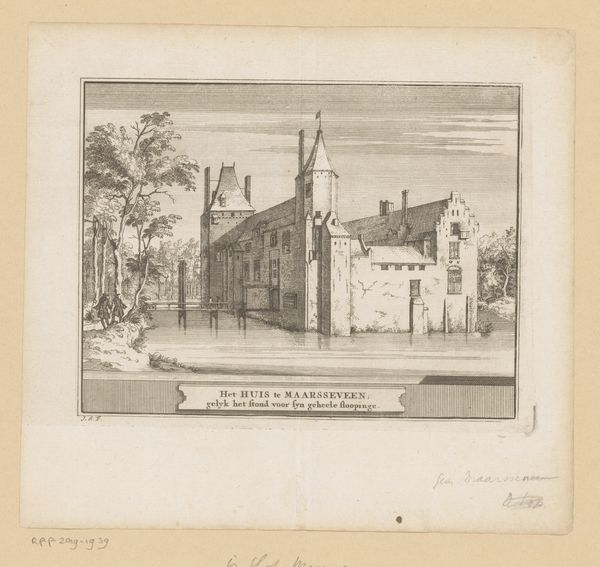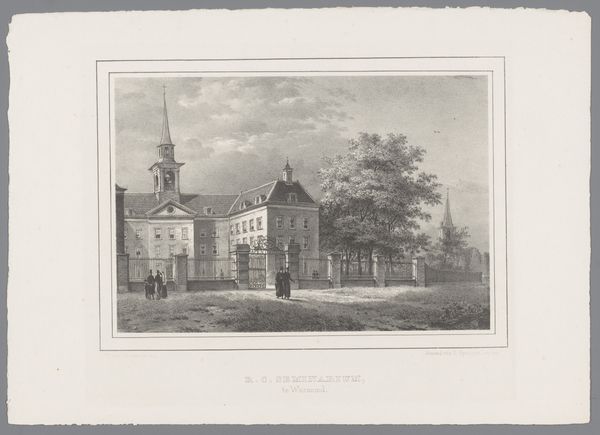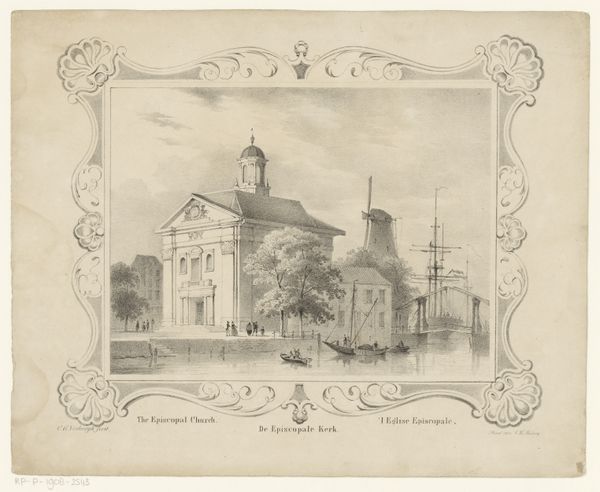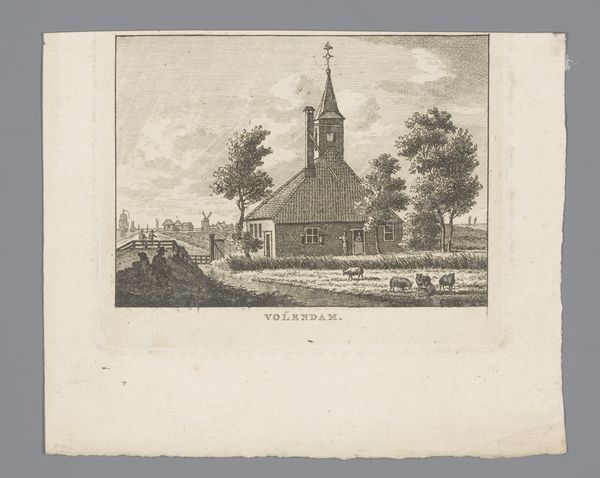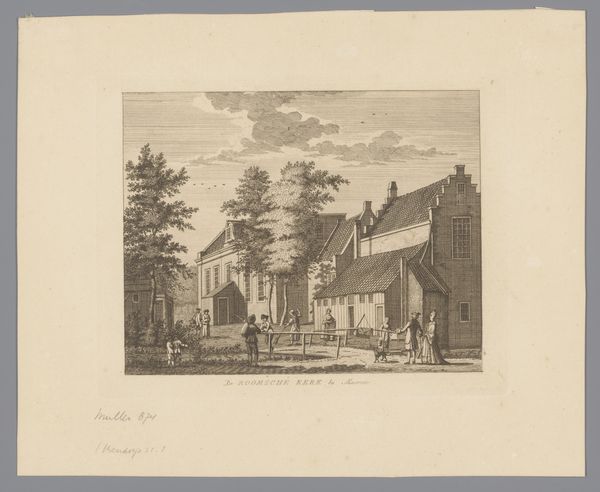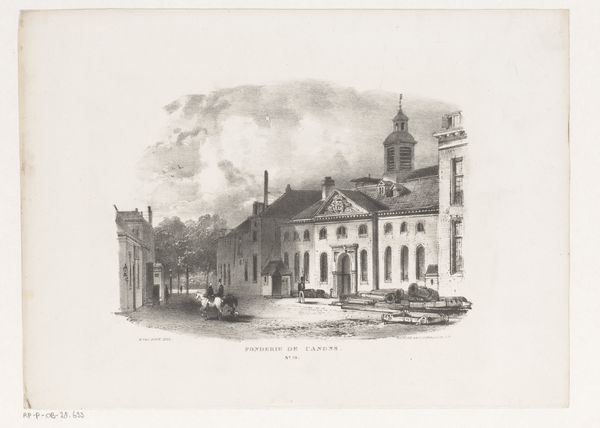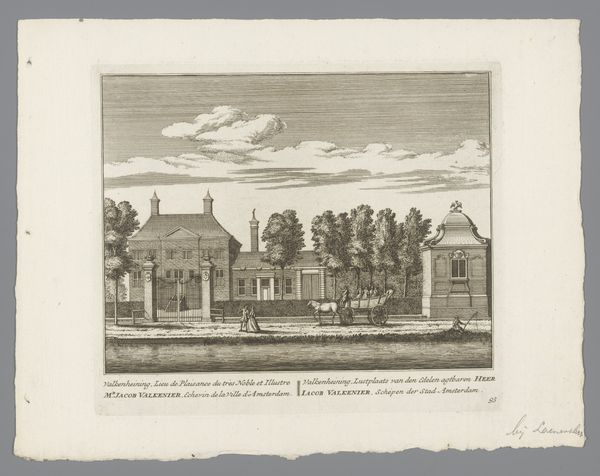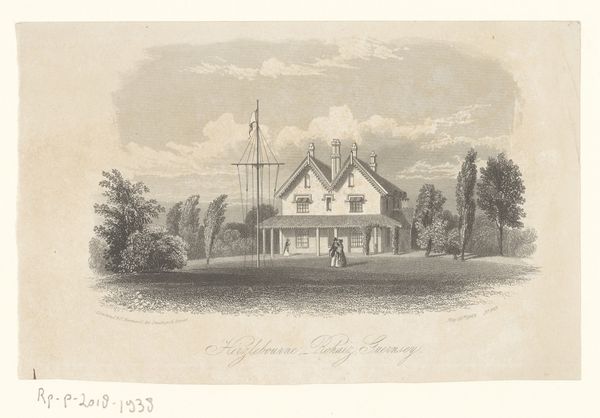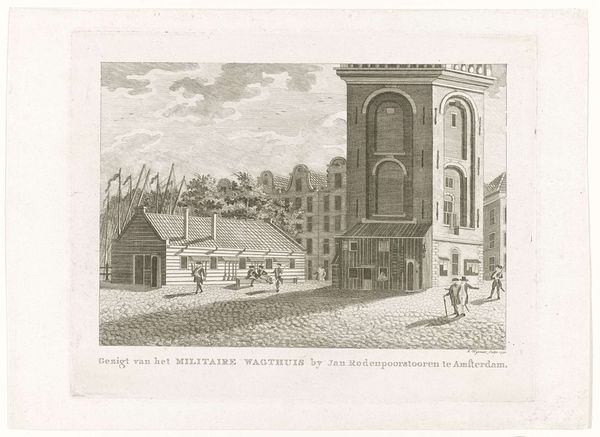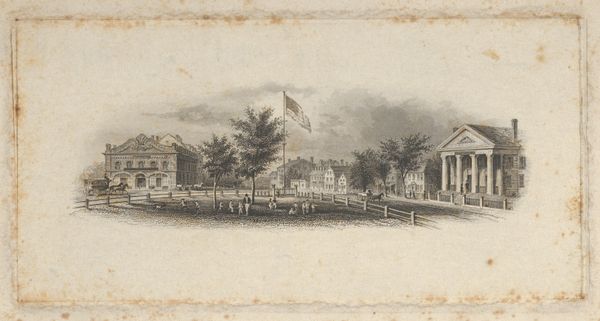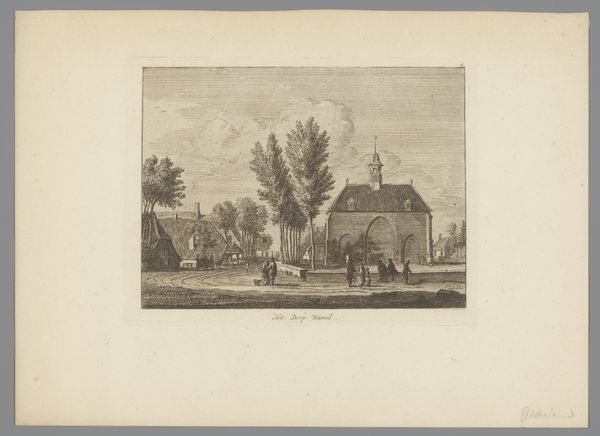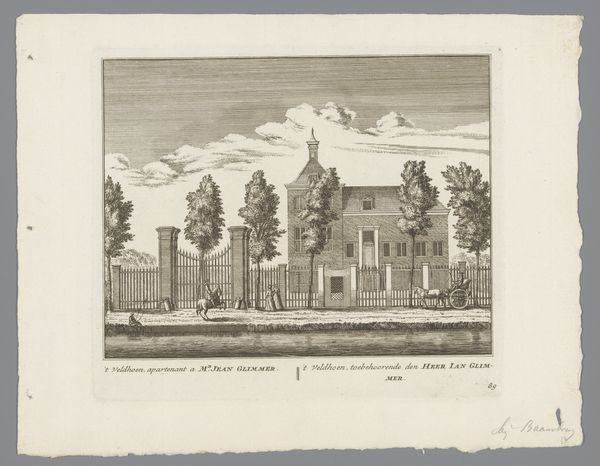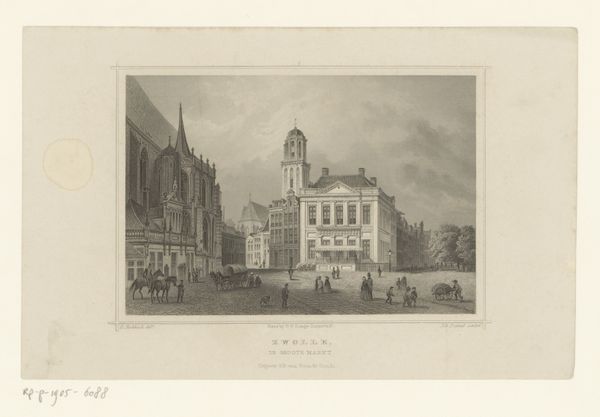
drawing, coloured-pencil, print, plein-air, pencil
#
drawing
#
coloured-pencil
# print
#
plein-air
#
landscape
#
coloured pencil
#
pencil
#
cityscape
Dimensions: sheet: 15 15/16 x 21 5/16 in. (40.5 x 54.2 cm)
Copyright: Public Domain
Curator: Look at this beautiful cityscape by J. H. Hooper, dating from 1836. It's titled "All Saints Church, Worcester" and it seems to be a drawing rendered in colored pencil. What strikes you most about it? Editor: It feels so placid, almost dreamlike. The colors are muted, creating this atmosphere of quiet reverence around the church. I’m immediately curious about the social landscape of Worcester at the time—the impact of industrialization on such serene architecture. Curator: The use of color definitely supports that interpretation. Churches have long acted as potent symbols of stability, both sacred and secular. I find myself reflecting on how churches visually organize social hierarchies, influencing identity, cultural memory, and moral values within their community. Editor: Absolutely, especially considering the timeframe. The early 19th century was ripe with social upheaval and religious reform. Churches like All Saints were caught in the middle of rapid change, trying to maintain influence as political and economic powers shifted. There’s a tension there, right? Between the timeless ideal and the day-to-day reality. Curator: Indeed. Note how Hooper situates the church among everyday buildings and businesses, almost domesticating the spiritual symbol. Yet the tower looms large, asserting dominance. It speaks to the complex role of the church as a guardian of tradition while simultaneously existing within the world. Editor: And who was welcome in that tradition, right? I mean, were those doors truly open to all, or only to those deemed worthy by the church elite? This era in England, with its entrenched class divisions and limited suffrage, creates an interesting framework. Curator: Yes. Visual symbolism and who controls the visual narrative have always mattered. In that respect, Hooper is acting as an anthropologist, capturing this delicate, complex moment. He’s showing us what Worcester society looked like and suggesting deeper, unspoken narratives. Editor: And making me, as a viewer in the 21st century, question those very systems and norms. I'm left pondering how sacred spaces continue to reflect and reinforce—or challenge—the social structures that shape our lives. Curator: It’s always fascinating how an image, frozen in time, can open up centuries worth of dialogue. Editor: Exactly! I love how these works can become silent yet profound advocates for conversation, continually demanding critical examination.
Comments
No comments
Be the first to comment and join the conversation on the ultimate creative platform.
